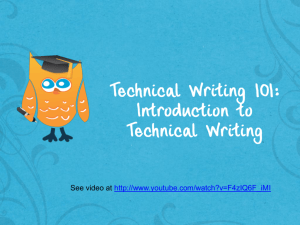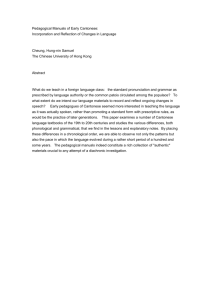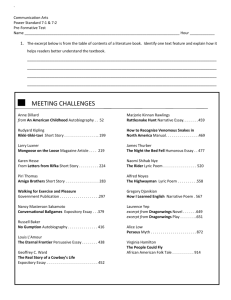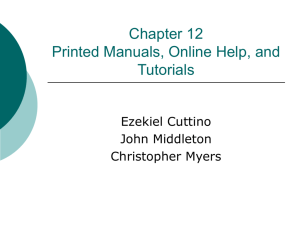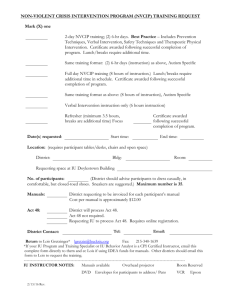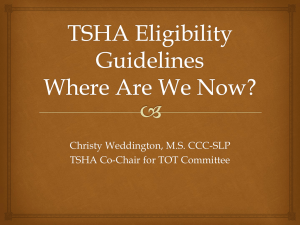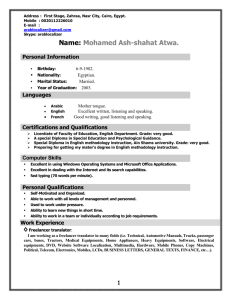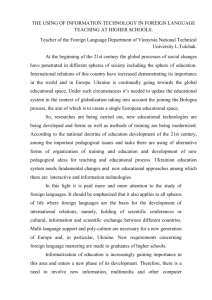EN 1244 Communication Skills: End User Computing Training and
advertisement
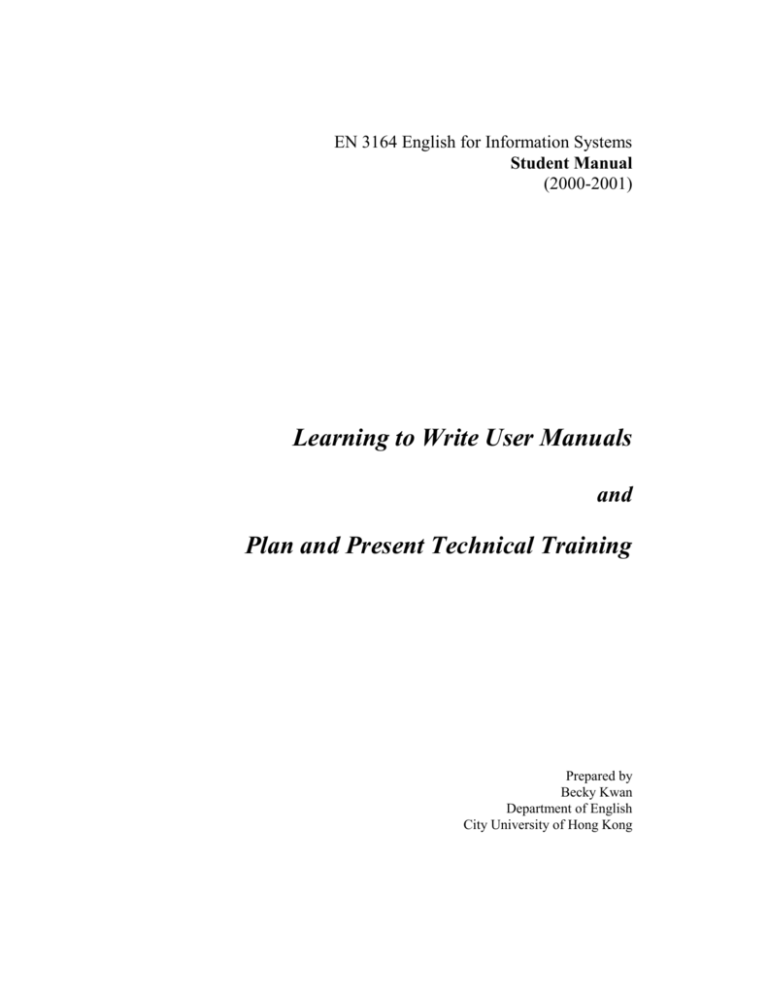
EN 3164 English for Information Systems Student Manual (2000-2001) Learning to Write User Manuals and Plan and Present Technical Training Prepared by Becky Kwan Department of English City University of Hong Kong PREFACE ================================================================ Documentation of software and hardware refers to the writing of instructional materials (e.g., technical product description, manuals, quick guides and trouble shooting manuals) for users of in-house computer products. End User Computing Training (EUCT) refers to the training for users of any computer products (e.g., software, hardware, and systems). EUCT takes on many forms: college training, company training, and vendor training. Documentation and EUCT are crucial to effective computer systems utilization. Without them, new software and various forms of technological enhancements can never be mastered successfully. In fact, EUCT and documentation have in the past decade evolved into a new discipline of its own, which draws on theories and knowledge from various disciplines of information technology, psychology, education and communication. Trend of EUCT and documentation writing Information technology has been developing at an exponential rate. Within a span of only 40 years, the information technology industry has already gone through three critical eras of mainframes in the 60s and 70s, the explosions of PCs and desktops in the 80s, and now information superhighways in the 90s. New versions of products emerge and outdate their former generations at such a dizzying rate that creates in the user community a never-ceasing demand for EUTC and documentation to cope with the mastery of new products. EUCT and documentation as job requirements or a career In-house training and preparation of documentation have in recent years received much attention by EDP (Electronic Data Processing) units of many big corporations and education institutes alike, City University of Hong Kong being one of them. Consulting firms and free-lance consultants have sprung up to cope with the demand of training. EUCT and documentation writing in fact make up two major areas of work in many jobs related to information technology. With a right mix of aptitude and sufficient training, an IT professional can consider developing his/her career along the line of EUCT. Course description To add to your competitive edge and professional versatility upon graduation, this course aims to develop your basic skills to plan and produce effective software manuals, and to conduct effective training. It also aims to develop your English proficiency. Skills learned in this course are transferable to some other IS courses. About this Manual This manual is written specifically for use in the course of EN 3164 of the BBAIS program at City University of Hong Kong. Adapted from a previous version of manual for the module written by Robert Hoffman, this manual contains notes, exercises and tasks that guide you through the learning of various principles of manual writing and workshop presentation. i Basic features The manual is divided into 12 sections, each of which is divided into two parts (except for Section I). The first part covers some basic principles related to the topic of the section. The second part is a file of tasks and worksheets, which guide you to learn and practise the principles covered in the section. How to use it? Study the instructional schedule in Section I.4 for the weekly reading and writing assignments before the class of each week. The criteria for assessment of various assignments are largely based on the principles covered in this manual. Make sure you refer to the relevant parts from time to time when working on the various assigned tasks. ii TABLE OF CONTENTS =============================================================== i PREFACE SECTION I INFORMATION ABOUT THIS MODULE Aims and Objectives I-1 Topics I-1 Marking Scheme I-2 EN 1244 Schedule I-3 Instructions of Tasks I-4 SECTION II SECTION III SECTION IV SECTION V SECTION VI USER MANUALS Purposes of user manuals General structure Types of user manuals General characteristics of formatting and appearance Tasks File II-1 II-3 II-3 II-5 II-6 AN OVERVIEW OF PRODUCTION PROCEDURE General procedure Needs and audience (user) analysis Contents selection Contents organization and tables of contents Tasks File III-1 III-1 III-3 III-3 III-6 WRITING THE PREFACE Contents Tasks File IV-1 IV-5 STRUCTURING A SECTION & WRITING INSTRUCTIONS Organization of a section Introductory texts in a user manual Writing instructions Collective vs component steps Supplying examples Supplying graphics (See also Section IX) Follow-up tasks in tutorial manuals Tasks File V-1 V-2 V-2 V-3 V-3 V-4 V-4 V-5 EXPLAINING TECHNICAL TERMS What terms to explain? Where to explain them? What to write? Language for writing explanations VI-1 VI-1 VI-1 VI-2 iii Organizing the glossary Tasks File SECTION VII VI-2 VI-3 EDITING TO ENSUR READABILITY Use of Language Use of symbols + conventions + graphics Tasks File VII-1 VII-2 VII-4 SECTION VIII PROOFREADING & AWARENESS OF LANGUAGE ACCURACY Tasks File VIII-1 SECTION IX SECTION X SECTION XI SECTION XII FRONT / END MATERIALS & USSE OF GRAPHICS Contents and Formatting of Front / End Materials References made to graphics (i.e., non-text materials) IX-1 IX-2 PLANNING TECHNICAL TRAINING WORKSHOPS Some facts about training and on-line help Manuals and face-to-face / real-time training Product sales presentations, demonstrations & workshops Why do people join IS / computing training workshops? What makes a professionally run training workshop? Preparing for a training workshop Tasks File X-1 X-2 X-3 X-4 X-4 X-5 X-7 DESIGNING MATERIAL AND ASSESSMENT Workshop title, overall aim and objective statements Teaching and learning activities Materials preparation Assessment Evaluation Tasks File DELIVERING TRAINING WORKSHOPS Workshop structure Workshop plans Delivery skills Language for workshops Tasks File iv XI-1 XI-4 XI-6 XI-6 XI-7 XI-8 XII-1 XII-1 XII-3 XII-6 XII-9


